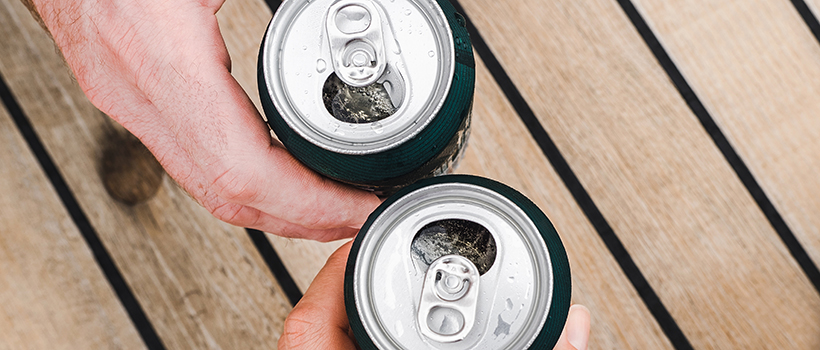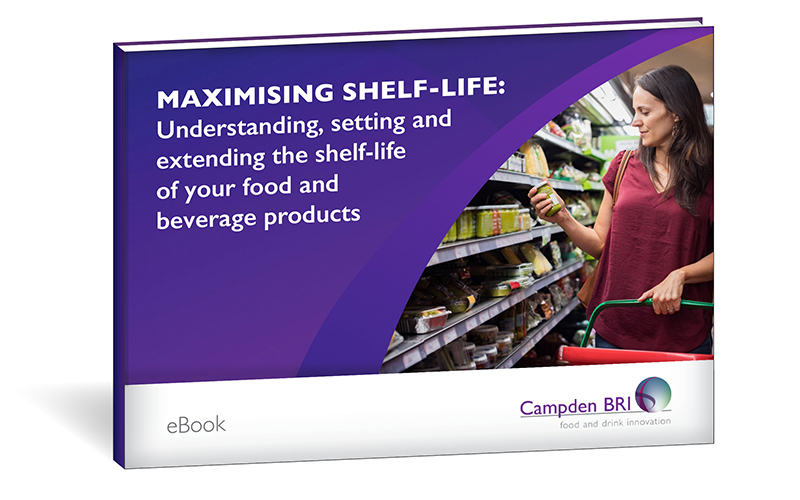
Challenge testing of canned drinks - Are yours microbiologically stable?
15 June 2022 | Roy Betts, Fellow and Grzegorz Rachon, Brewing Microbiology Research Section Lead
Consumer demand is evolving and cans are proving popular thanks to their convenience and recyclability. The beverage industry is responding to demand and packaging is subsequently changing to keep up with the fight to win market share in drinks categories.
Product formulation, processing, packaging technologies and transport expose canned drinks to microbiological risks. With around 600 million, almost 1 in 10 people in the world, falling ill after consuming contaminated food and drink every year, understanding if a product is microbiologically stable is critical for food processors and handlers.
How do I know if a canned drink is microbiologically stable?
With most canned drinks, knowledge of their stability is based on the experience of industry technologists, coupled with information in scientific publications on procedures that eliminate or prevent the growth of organisms. However, for entirely new products or formulations, this knowledge and data may not exist. While some predictive models may provide insight, these do not establish if the canned drink is stable and will prohibit microbial growth.
Microbial challenge testing can solve this issue.
What is a challenge test?
A challenge test is used to simulate what happens to a product during processing, distribution, preparation and handling, throughout its shelf-life, should it be contaminated with a microorganism. It is performed by deliberately inoculating a food or drink with a microorganism of concern, a pathogen or spoilage organism, to determine if the organisms would present a potential health hazard or spoilage risk. It helps processors ensure the safety of any new or reformulated product in which potentially hazardous microorganisms might be present in low or incidental numbers. It also helps to determine whether a food or beverage has the ability to “kill off” any pathogens that may have accidentally entered.
Download the complete Maximising Shelf-life eBook, for free, to unlock the tools for measuring and maximising the shelf-life of your food and drink products whilst ensuring their safety and quality.

One of the issues when conducting challenge tests is how to inoculate the product with the organism or organisms being used. It is important that the organisms are in a state similar to that found in the natural environment, that they are placed in the food or drink in a way that duplicates how they may occur in nature, and that in doing this, the environment within the pack or container that holds the food is not disturbed or changed in any way, as this may invalidate the test.
Problems with canned drinks
Canned drinks have always been problematic when setting up challenge tests. How is it possible to introduce the challenging microorganism into the can? Piercing may introduce contamination and allows carbon dioxide (if carbonated) to escape and oxygen to enter. These changes in conditions may allow organisms that would not normally grow in the product, to develop and give a misleading result. In the past attempts have been made to aseptically dispense the can content into other sterile containers and inoculate these, however the same problems of loss of carbonation (if the drink is carbonated) apply and it is very possible that misleading results could be obtained.
The solution
Dr Grzegorz Rachon, who leads the Brewing Microbiology Research team at Campden BRI, has developed techniques to aseptically drill tiny holes in cans to quickly introduce the challenge organism. The hole is then sealed with a sterile metal rivet, minimising any change to the conditions within the can. The drink remains carbonated, excess oxygen is not introduced and the rivet can withstand the internal pressure of carbonation and any additional pressure that may build up from fermentation in case the challenge organism is capable of growth.
The cans can be incubated for any length of time or at any temperature and finally opened and examined microbiologically to establish if growth has occurred. This procedure gives the very best method for the realistic challenge testing of carbonated drinks cans, eliminating the problems of previous methods and adding further to Campden BRI’s expertise in challenge testing.
How can we help
Challenge tests are now being conducted more frequently by the drinks industry. Knowing when to perform one, how to design and conduct it and how to interpret the results, assists food processors in showing that their products are of high quality, stable and safe. In addition, testing assures that regulatory mandates or finished product specifications are met. However, if food processors get the process wrong, they may conclude that an unstable product is stable and hit major safety and quality issues when in production.
Our microbiologists are experts at challenge testing all types of food and drink, both for pathogens and spoilage organisms. We have the knowledge of the correct processing and preservation systems, availability of predictive models and for the definitive answer, the use of the best challenge testing protocols and experience available.
Basically, we wrote the book ( Campden BRI Guideline 63: Challenge testing protocols for assessing the safety and quality of food and drink), and we sit on both ISO and EU committees writing the definitive standards for challenge testing.
Would you like to explore how challenge testing can help your business with one of our experienced microbiologists? You can. (See what we did there?) Contact us today for an initial free consultation to discuss your beverage safety needs.

About Grzegorz Rachon
Grzegorz (Greg) is a microbiology expert who has been in the food industry since the early 2000s, and has been working at Campden BRI since 2016. He has PhD from Reading University and Birmingham University, as well as extensive expertise in pasteurisation optimisation of beverages, process validation, and stability of traditional and novel beverages.
Challenge testing guideline
Find out more about our guideline on challenge testing protocols for assessing the safety and quality of food and drink
How can we help you?
If you’d like to find out more about challenge testing, contact our support team to find out how we can help.






